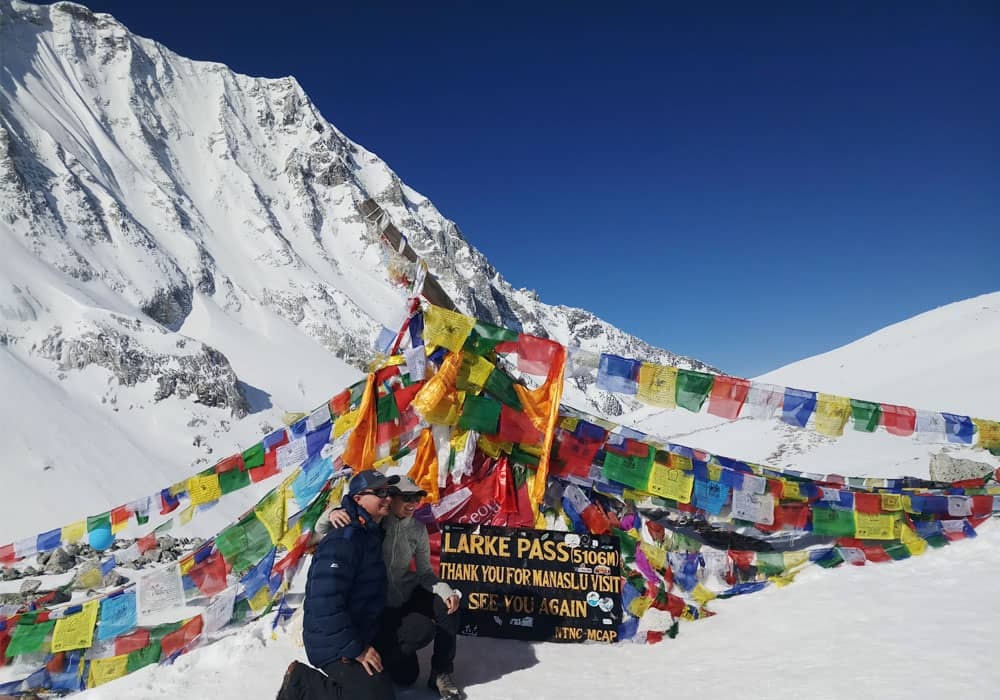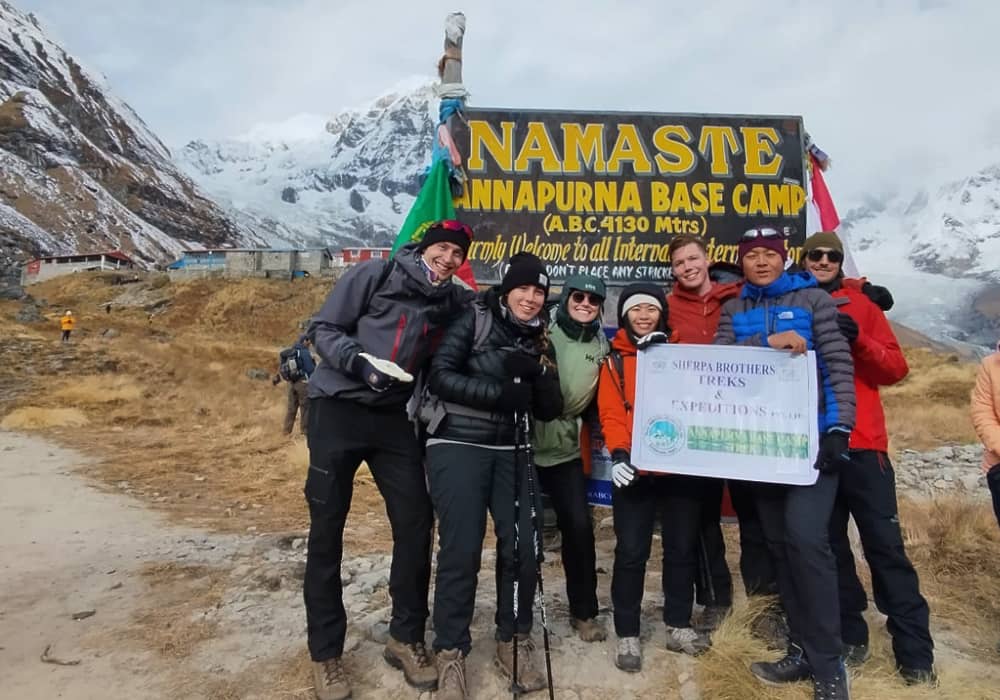The Khopra trek typically involves 6-7 hours of daily walking. The first day’s trail lead from village to village in a flat, gradual uphill climb. This moderate-grade hike passes through a valley with open space, uphill ridge and rocky terrain. As you walk higher, your body will need more physical effort, and the altitude will make your pace feel slower and harder. However, if you stay healthy and have a positive attitude, you can make this trip the best success of your life. The trip is also worth for planning medium altitude soft first time trekking and hiking experience in the Himalaya attempting to do family holiday, solo to group trip. It is vital that participants with pre-existing medical problems or conditions make these known to Sherpa Brothers Trek at the time of booking.
Accommodation and Food
In Kathmandu & Pokhara: 3 star deluxe hotel with bead and breakfast on twin sharing.
On trek: Tea house accommodation ( trekking guest house) and food on full board (Breakfast, Lunch and dinner tea coffee). The tea houses along the trekking route provide basic but comfortable accommodations, with twin sharing rooms available. These tea houses also offer a variety of delicious home cooked meals to keep you energized throughout the day, including breakfast, lunch, and dinner. Additionally, you can enjoy hot drinks such as tea or coffee to warm up after a long day of trekking.
Travel Insurance
Sherpa Brothers Treks and Expedition Pvt/ Ltd. take every care to make our treks safe and enjoyable. All our routes are scouted to ensure the trails are safe and the facilities along route are of an acceptable standard. In addition, we have vast experience of trekking at altitude and are trained to deal with Acute Altitude Sickness. However, due to terrain, weather and altitude, risk is not always predictable in the Himalaya. To ensure you have a worry free time with us, personal travel insurance is essential to cover the cost of unforeseen accident, illness or rescue. The costs involved can be large and personally overwhelming in the unlikely event of accident or injury.
All Nepalese staff, guides and porters employed by Sherpa Brothers Pvt. Ltd. are covered locally but we regret that we cannot offer insurance for our clients.
Required gears check list
Having the right gear ensures that you are prepared for adventure and all challenges or emergencies that may arise during your mountain adventures. From proper clothing and footwear to essential tools and safety equipment, your gear provides the necessary support and protection needed to navigate through rugged terrains and unpredictable weather conditions.
Below we present you a basic complete packing list suitable for this trek.
Hiking gears
Day bag 1 – A porter will carry your primary gear in duffel bag (up to 12kg per trekker). You’ll need to bring your own daypack. 30–35L is adequate.
Dry Bag 1 – This protects your bag and clothing from potential moisture, wet object and rain.
Walking pole 1 – ( if necessary) Trekking poles can decrease the impact on your joints by up to 20%. They are excellent for knees while going down. We recommend adjustable Black Diamond trekking poles.
Water bottle or camel bag 1 – Capacity to carry 3 litre of water. Options: 2 x 1.5 litre wide mouth nalgene bottles or 2 litre platypus + 1 litre water bottle.
Head light 1 – You will need a headlamp with a good light output for any late-night restroom trips. Petzl make renowned and affordable headlamps.
Knife / Multi tools – 1
Cloth and body wear
Down jacket 1 – You’ll need this for the the evenings at lodge camp when you’re tired, you feel the cold a lot more.
Sleeping bag 1 – rated 0°F, -20°F.
Light or medium wight warm hiking trouser 2 – an option of convertible trousers.
For the colder parts of the trek you’ll need good winter hiking pants – just make sure they are breathable.
Warm liner 1 – For extra warmth in sleeping bag.
Towel – 2
Warm sun hats 1 – lot of heat is lost through your head, so be sure to get a warm thermal hat as well as one that protects your neck from the harsh rays of the sun.
Fleece / jacket and pants 1 – Modern technical fleeces (such as Polartec) make excellent insulation layers.
Windproof jacket and Pants 1 – pants with full-length zips make getting them on and off quick and easy.
Long and half sleeve hiking shirt 3 – As per you body size lightweight, moisture wicking long and short sleeved shirts.
Buff for (neck and head) – 1
Walking boot 1 – We recommend light- to mid-weight waterproof boots with good ankle support. You don’t need to go full-mountaineering boot.
Gloves / mittens 2 – For the cold nights through the trek, we recommend heavyweight, insulated, preferably water resistant gloves.
Warm hiking socks (wool / synthetic) 3-4, pairs of outer socks and 2-3 pairs of liner socks. We also recommend bringing 1 x thick thermal socks for winter season hike .
Gaiter 1 – Help keep your trousers clean in dusty, wet and muddy trail conditions
Flip flap/ Sandal 1 – To wear around after a day’s trek we recommend bringing a pair of sandals
Sun protection, health hygiene and water
Sun cream 1 – SPF 40+ Sunscreen is very important as the sun’s rays are much stronger at altitude.
Sun glass 2 – (incase of one broke) choose high UV protection glasses of any brand as sun intensity after 3500 is very high.
Sun hat 1 – if possible go for a hat that is wide-brimmed for protection, and has a neck cover if you aren’t going to be wearing a neck gaiter
Lip guard 1 – To keep your lip moisturized in dry air and the stronger sun ray
Tooth brush – 1
Face wash soap – 1
Sanitizer wipes – 2/2
Electrolyte/Sports drink powdered formula for adding to your water Water can get pretty boring, so it’s a good idea to bring along an electrolyte formula that’s flavored to your liking.
Snacks: Energy bars of your preference – plan for 2-4 per day Snacks such as energy bars, trail mix, and candy can help give you a quick energy boost while on the trail. Just avoid anything with caffeine in it.
Ear plugs – For light sleepers. Snoring travels in quiet high altitude lodges
Prescription medicine
Water purifier tablet / lightweight pen filter
Toilet paper – Bring two rolls of toilet paper, one to keep in your daypack for use on the trail, and one in your duffel for use at tea house camp. Taking the cardboard center out makes it easier to transport.
Menstrual product for her
Diamox (if using)
Blister plasters – different shapes and sizes
Antibiotic cream or ointment
Hairbrush/comb
Foot powder
Nail cutter
Personal belonging items
Passport
Cash Visa / credit card
Cell phone
Power bank backup and charger – The standard voltage of electricity in Nepal is 230 V and the frequency is 50 Hz. You can use your electric or electronic appliances in Nepal without a voltage converter.
Camera / Gopro
Reservation cancellations policy
There will be no fees associated with cancellations made more than 45 days prior to departure.
A penalty of 30% of the total trip cost will apply for cancellations made between 30 and 44 days prior to departure.
60% of the total trip cost will be lost for cancellations made between 15 and 29 days prior to departure.
If a cancellation is made 14 days prior to departure, there will be no reimbursement.
Additional specifications
When making your reservation, please let us know about any special needs you may have so that we can make responsible efforts to accommodate your requests and special requirements, as long as the locations and resources allow.




 Trip Grade : Moderate
Trip Grade : Moderate Trip Durations : 9 Days From Kathmandu
Trip Durations : 9 Days From Kathmandu Highest Point : 4700 m / 15,418 ft
Highest Point : 4700 m / 15,418 ft Best Season : Sep, Oct, Nov, Dec - Mar to June
Best Season : Sep, Oct, Nov, Dec - Mar to June  Meal Plan : Breakfast in Kathamandu and Full board on Trek
Meal Plan : Breakfast in Kathamandu and Full board on Trek 

